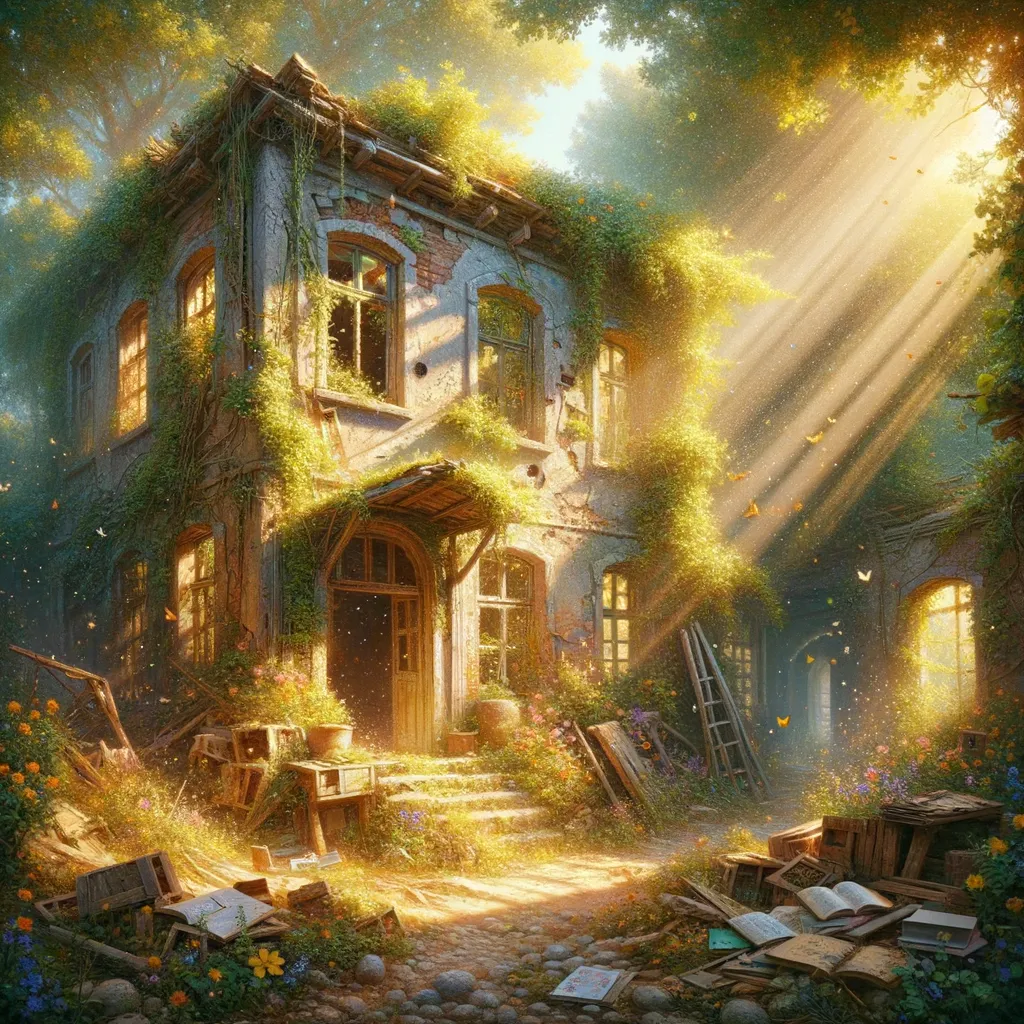Reviving Dreams: A Journey Through Forgotten Walls
In the heart of a forgotten town, a crumbling building stood as a poignant reminder of lost dreams, its weathered façade whispering stories of creativity and ambition that once thrived within. Drawn to its melancholic beauty, I felt an undeniable connection, as if the structure echoed my own aspirations, dulled but not extinguished. As I ventured through its shadowy corridors, the discovery of hidden remnants—sketches and journals—sparked a vision of transformation, igniting a flicker of hope that this space could once again become a haven for artists and dreamers. The journey ahead promised challenges, yet it was also a chance to confront the ghosts of the past and reclaim the vibrant spirit that had long been silenced. Standing before the building, I realized that this restoration mirrored my own quest for renewal, a reminder that amidst decay, there lies the possibility of rebirth and the rekindling of dreams waiting for their moment to flourish.
In the memory of May 7, 2008, I found myself standing before a crumbling edifice, its once-vibrant walls now cloaked in a drab shroud of neglect. The building, a relic of an ambitious dream, seemed to exude a quiet sorrow, whispering tales of what could have been. Its windows, like hollow eyes, gazed out onto a world that had long since forgotten it, each crack in the façade a testament to the passage of time and the weight of unfulfilled aspirations. I felt an inexplicable pull toward it, as if the structure held pieces of my own past, fragments of ambitions that had faded like the paint peeling from its surface.
As I stepped closer, the scent of damp wood and rust filled the air, mingling with the sweetness of wildflowers that dared to bloom in the cracks of the pavement. Nature had begun its reclamation, a reminder that even in abandonment, life finds a way. The overgrown vines curled around the iron railings, a fierce embrace that hinted at resilience. It was a paradox, this building, standing firm against the tides of time yet slowly succumbing to decay. I wondered if it could be restored, not just in brick and mortar but in spirit—much like my own ambitions.
The structure had once been alive with laughter and dreams, a hub of creativity where ideas danced like sunlight across the floors. I could almost hear the echoes of conversations, the hum of inspiration that had once filled its halls. It dawned on me that restoration would not merely require physical labor; it would demand a rekindling of passion, a rekindling of the very essence that had animated the space. Could I breathe new life into this forgotten sanctuary, just as I sought to revitalize my own hopes?
As I wandered through the shadowy corridors, I began to envision the possibilities. What if the building were transformed into a community center, a haven for artists, thinkers, and dreamers? Walls adorned with murals would tell stories of hope and resilience, and workshops would foster the creative spirit. Each room could serve as a canvas for innovation, a place where ideas could take flight once more. The vision shimmered in my mind, a beacon of possibility amidst the rubble.
Yet, the journey of restoration would not be without challenges. The weight of history hung heavy, a reminder of the failures that had led to the building’s decline. The very act of renovation would require confronting these ghosts—acknowledging the dreams that had been abandoned and the fear that had stifled them. It was a delicate dance, balancing nostalgia with the courage to envision a new future. The building, like my aspirations, bore the scars of past disappointments, and I knew that healing would demand both patience and vulnerability.
In the midst of this reflection, I stumbled upon a hidden room, its door barely ajar, inviting me into its depths. Inside, I discovered remnants of creativity: scattered sketches, half-finished canvases, and journals filled with musings. Each artifact whispered stories of potential unrealized, a testament to the dreams that had once flourished within these walls. It was as if the building itself had been waiting for someone to recognize its worth, to acknowledge the beauty that lay in its imperfections.
With renewed determination, I envisioned not just the physical restoration of the building but a revival of its spirit. Workshops would ignite passion, and community events would breathe warmth into its cold corners. The very act of restoring this place would mirror the reclamation of my own dreams, a journey toward healing and growth. In this shared endeavor, the building would transform from a symbol of abandonment to a sanctuary of hope, a space where the past could coexist with the future.
As I stepped back outside, the sunlight danced across the façade, illuminating the possibilities that lay ahead. The air was thick with potential, electric with the promise of new beginnings. I realized that the process of restoration was not just about bricks and mortar but about weaving connections, fostering creativity, and nurturing the dreams that had long lain dormant. The building stood as a metaphor for my own journey, a reminder that even in the face of adversity, there exists an opportunity to rise anew.
In the end, as I looked back at the structure, I couldn’t help but wonder about the many abandoned dreams that linger, waiting for someone to breathe life back into them. What dreams have you left behind, and how might they flourish if given the chance to be restored?
Amidst the echoes of forgotten dreams, the heart of a crumbling edifice beckons, reminding all that even in decay, the spark of hope can ignite a renaissance.



